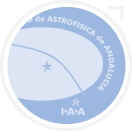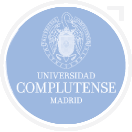CO2-driven formation of gullies on Mars
Since their discovery by the Mars Observer Camera, Martian gullies have attracted considerable attention because they resemble terrestrial debris flows formed by the action of liquid water. This interpretation is now questioned by the discovery of ongoing gully formation occurring in conditions much too cold for liquid water, but with seasonal CO2 frost present and defrosting. However, how a relatively thin seasonal dry ice cover could trigger the formation of decameter large debris flows exhibiting levees and sinuosities as if they were liquid-rich remained mysterious. We have developed an innovative thermo-physical model of the Martian soil able to compute the seasonal evolution of a column composed of an underlying regolith, a CO2 ice layer, and the atmosphere above. Below the surface, in the CO2 ice layer (when present) and in the regolith, the model simultaneously solves the heat conduction, the radiative transfer through the ice as well as the diffusion, condensation and sublimation of CO2 and the related latent heat exchanges. We have found that, during the defrosting season, the pores below the ice layer can be filled with CO2 ice, and subject to extreme pressure variations. The subsequent gas fluxes can destabilize the soil and create gas-lubricated debris flows with the observed geomorphological characteristics of the Martian gullies. In particular the viscosity of such flows can be estimated to range from a few tens to a few thousands of Pa.s, similar to water triggered debris flows and consistent with previous calculations on Martian gullies. Importantly, these gas fluidized debris flows can occur below the theoretical angle of repose, which has been a concern in the understanding of gully landforms formation. We also performed model calculations for a wide range of latitudes and slope orientations. These simulations reveal that high-pressure CO2 gas trapping in the subsurface and the subsequent formation of ice within the regolith pores are predicted at latitudes and slope orientations where gullies are observed and not elsewhere. In particular the model explains why gullies are only observed on pole facing slopes between 30° and 45° latitude, and with no orientation preference above 45° latitude.






























